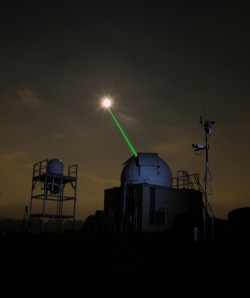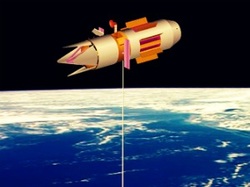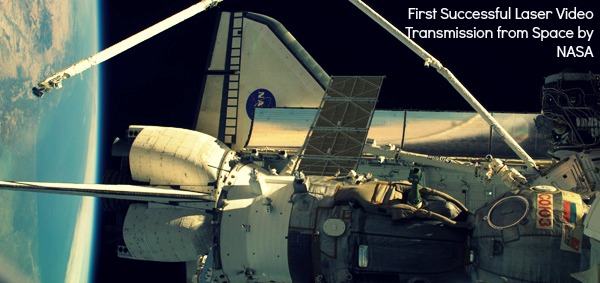NASA created another successful space communication marvel by successfully transmitting a HD video using laser communication from space station to the Earth's surface.
Remember those sci-fi movies where in information travelled superfast using laser communication including spaceship propulsion using laser lights? Well the journey into that sci fi world has already started and the very first success has come in form of laser communication wherein NASA on 5th June 2014, successfully transmitted a high definition video message from International space station to the Earth's surface with perfect accuracy. The fete was achieved by NASA's project OPAL (Optical Payload for Lasercomm Science) which transferred the 175 megabit video message from space station several miles above the Earth's surface. This development will bring in major inroads in the field of data transmission and future deep space explorations. Let's see how this OPAL experiment works and what it holds in for us in the future and also how this laser transmission works.
How does this Space Laser Transmission (OPAL) Work
 Beacon sending the data using Lasers
Beacon sending the data using Lasers Well before we see what this laser communication technology holds in for us let's check out how this works. OPAL basically is simple setup consisting of satellites in space and the huge antennas sitting on the Earth's surface. These Antennas work as both data senders and receivers as well and are generally in the form of a beacon. These beacons send in the data to the satellites directing the green laser bear towards the satellites orbit using the necessary communication calculations that is directing the beam in a position before hand as the satellite keeps orbiting and in order to receive the signal the beam should be directed in a position where it is going to be after the transmission. These laser signals can be visible to the naked eyes during climate changes, reminding one of the alien invasions portrayed in several outer terrestrial concept based sci fi movies and books, but don't worry it's not an invasion but beginning of something cool that you have already seen in these movies.
OPALS can send lasers at bandwidths higher than any possible radio waves and is capable of transmitting at rates of 10 to 1,000 times faster than radio wave methods.
 Satellite pinging back with Laser Transmission
Satellite pinging back with Laser Transmission The laser communication despite interference from atmosphere is overpowered and concentrated to make sure there is no loss of data. The revolving satellite receives the data and then reflects back the data apart from sending it to the desired location to achieve two purposes of pingback confirmation and sending the requested data to the desired location. The satellite uses the similar data coordinates of the sender and the requester and sends the data using the laser communication. The very first demonstration was done on a 175 megabit video which was just 37 seconds long took just 3.5 seconds to get transmitter using the laser transmission which is comparatively much faster when compared to 10 mins it would have taken using the radio wave transmission giving us incredible download speed.
Nasa's OPAL experiment demonstrated video transmission speeds of up to 50MB per second transmission which is 200MB per second for deep-space missions.
Watch the video NASA transmitted to Earth on a laser beam. Guess what the Message was?
Hint: The Same video Message is sent and Transmitted on Alien Planets as well. Haaa I like being a spoiler so let me tell you it's the "Hello World!" message, not a typical coder program one but the one sent to aliens for communication. :) Don't believe me watch it yourself. :D
OPALS payload attached to the International Space Station makes transmitting data super fast with the help of laser technology.
What This Laser Communication Experiment OPAL holds in For Us
| |
|
- Secondly this technology is already in use for the Nasa's Moon hovercraft project where communications are as fast as 200MB/sec and using the similar principle for Earth's communication our deep space projects will be much more efficient in delivering the millions spent on space projects.
- Thirdly this technology serves as a base for future projects like the laser propulsion projects of propelling objects in space without using any payload and just using the powerful laser beams. Just imagine destroying or diverting a asteroid heading for earth using this laser propulsion technology which has much more to give in the coming years.

 RSS Feed
RSS Feed
